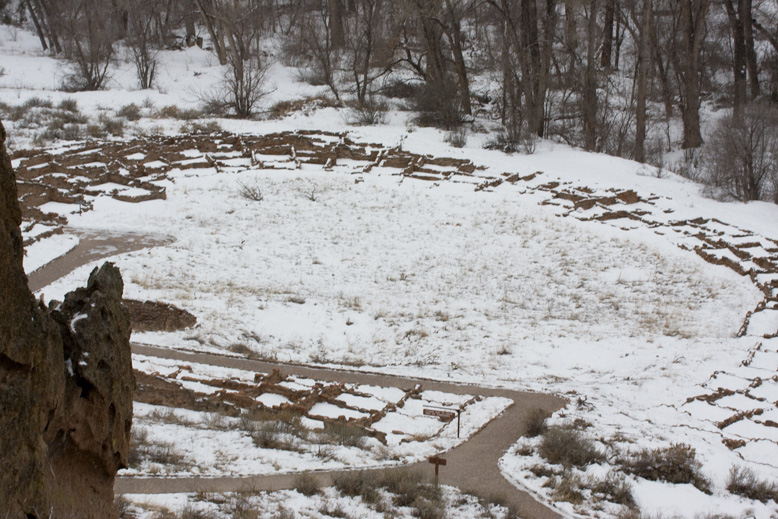
Bandelier National Monument is located in New Mexico, outside of Santa Fe. It comprises 33,677 acres (13,629 ha) preserving the homes of the Ancestral Pueblo People. It is named after Swiss anthropologist Adolph Bandelier, who researched the cultures of the area.
Bandelier was designated a National Monument on February 11, 1916, while most of its backcountry became a "designated wilderness" in October 1976, but the hisotry of the area has much deeper roots.
The main attraction of the monument for the casual visitor is Frijoles Canyon, containing a number of ancestral pueblo homes, kivas (ceremonial structures), rock paintings and petroglyphs. Some of the dwellings were rock structures built on the canyon floor.

Other houses were "cavates" produced by voids in the tuff of the canyon wall and carved out further by humans. A 1.2-mile (1.6 km), predominantly paved, "Main Loop Trail" from the visitor center affords access to these features. A trail extending beyond this loop leads to Alcove House (formerly called Ceremonial Cave, and still so identified on some maps), a shelter cave produced by erosion of the soft rock and containing a small, reconstructed kiva that hikers may enter via ladder.

The visitor center at Bandelier National Monument features exhibits about the site's inhabitants, including Ancestral Pueblo pottery, tools and artifacts of daily life. There are two life-size dioramas that demonstrate Pueblo life in the past and today. Also featured are contemporary Pueblo pottery pieces, 14 pastel artworks by Works Progress Administration artist Helmut Naumer Sr, and wood furniture and tinwork pieces created by the Civilian Conservation Corps. There is a 10 minute introductory film about the monument.
Text adapted from Wikipedia's article on Bandelier National Monument;
Images Copyright John M. Garrison - 2010
Return to John's CBTE162 Homepage